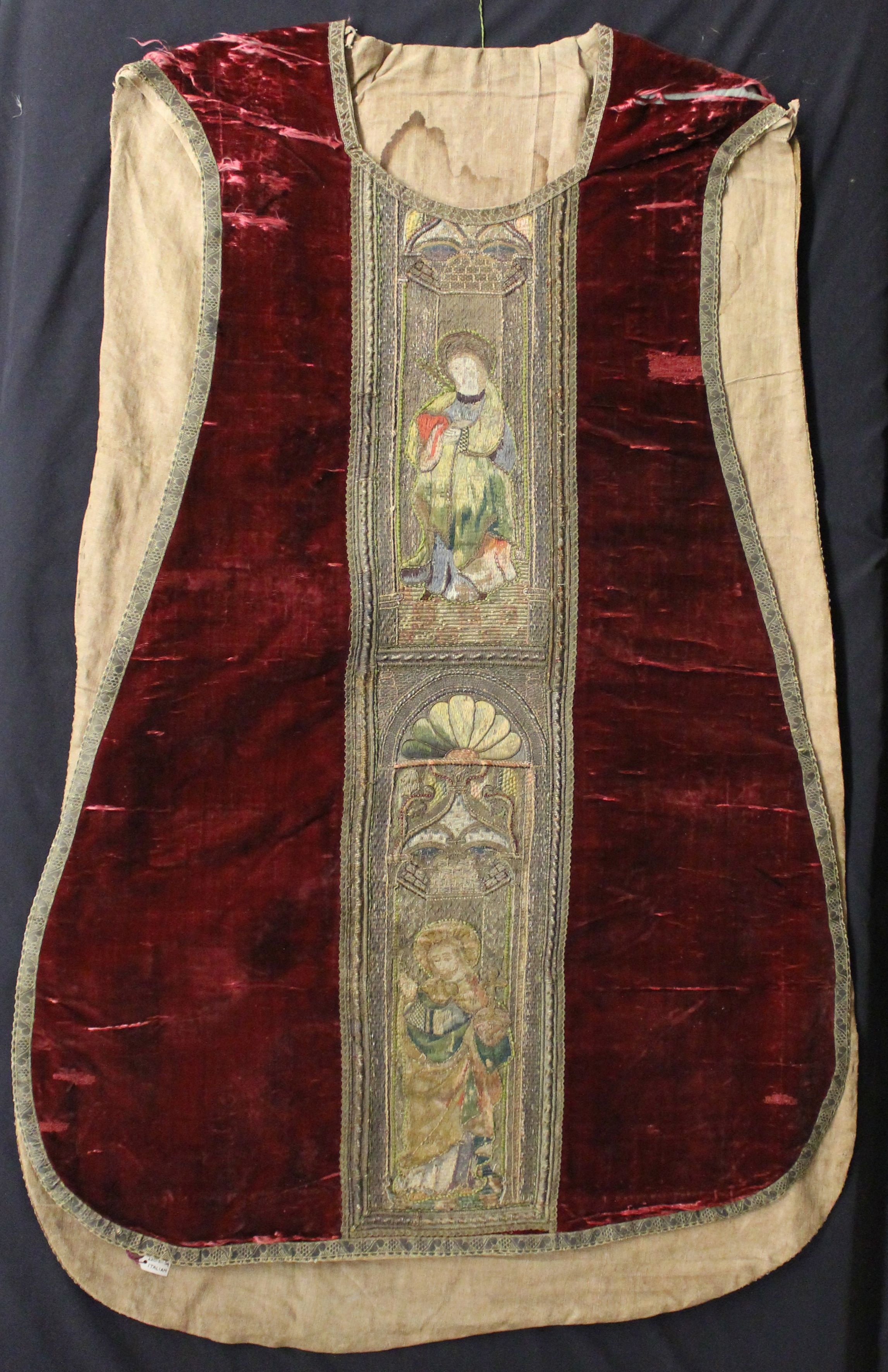Project Description
The chasuble is the outermost liturgical vestment worn by clergy for the celebration of the Eucharist in Western-tradition Christian Churches that use full vestments, primarily in the Roman Catholic, Anglican, Lutheran, and United Methodist Church (during the Eucharist). In the Eastern Orthodox Churches and in the Eastern Rite Catholic Churches, the equivalent vestment is the phelonion. The chasuble originated as a sort of conical poncho, called in Latin a “casula” or “little house,” that was the common outer traveling garment in the late Roman Empire. It was simply a roughly oval piece of cloth, with a round hole in the middle through which to pass the head, that fell below the knees on all sides. It had to be gathered up on the arms to allow the arms to be used freely. To make it easier for the priest to join his hands when wearing a chasuble of stiff (lined and heavily embroidered) material, later centuries cut the front away further, giving it the distinctive shape often called “fiddleback”. Complex decoration schemes were often used on chasubles of scapular form, especially the back, incorporating the image of the Christian cross or of a saint; and rich materials such as silk, cloth of gold or brocade were employed, especially in chasubles reserved for major celebrations. This particular Chasuble bears an Orphrey band down the front and back. Frequently found on ecclesiastical vestments, orphrey is an intricate embroidery technique that can take hundreds of hours. The bands on this garment depict the figures of saints, sacred to the faith.
-Susan Bonta, Class of 2018

